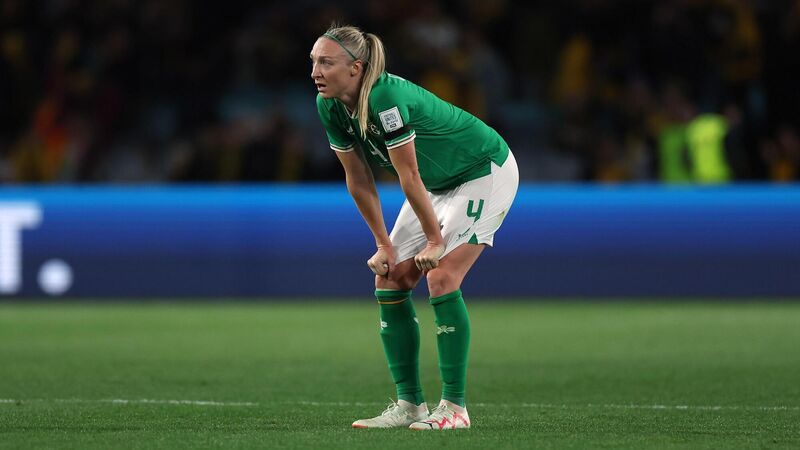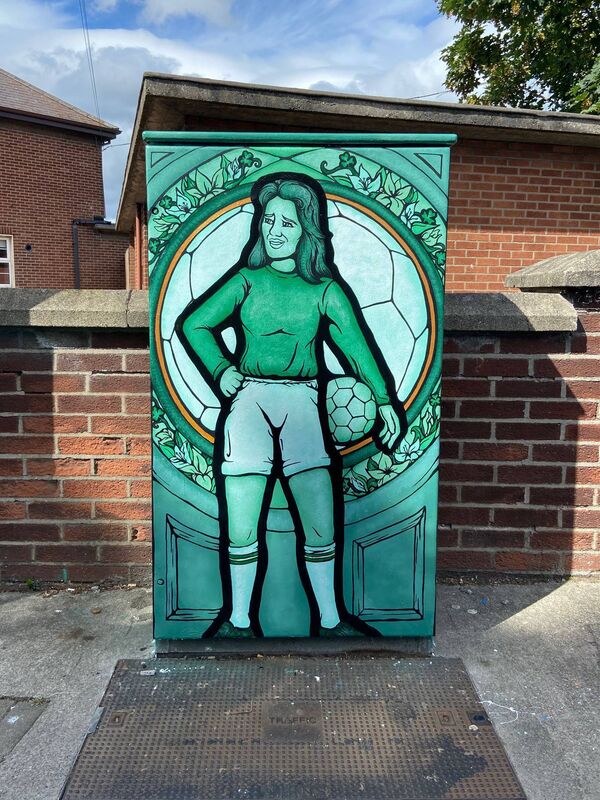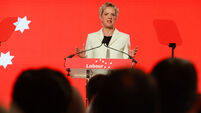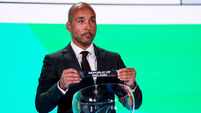Clodagh Finn: Here’s to the first female footballers who led the way

Doing us all proud: Republic of Ireland's Louise Quinn after the final whistle of the Fifa Women's World Cup 2023, Group B match at the Sydney Football Stadium, Australia. Picture: Isabel Infantes/PA
IRISH soccer great Anne O’Brien said she started playing football as soon as she could walk, at the age of just two.
That early passion paid off in spades. When she was 17, the girl from Inchicore in Dublin made history when she became the first female player from Ireland to play professionally in Europe.
It was 1973. She had already honed her skills from the age of 12 with Inchicore Celtic, the team her mother Rosanna formed to nurture her daughter’s talent.
Rosanna O’Brien (née Giles) was related to the footballing great Johnny, so she saw the importance of early encouragement.
Although opportunities in women’s soccer in Ireland were few — Anne once described the women’s game as shambolic — her singular talent was spotted by a visiting French side, Reims, which quickly offered her a contract.
Her mother insisted she wait until she turned 18 before she left for France to take up a three-year contract with Stade de Reims.
It was the beginning of a stellar career. She won two French league and cup titles and travelled widely with the team, playing in Haiti, Guadeloupe, Morocco, and Algeria.
In 1976, she joined Rome club Lazio and quickly established herself as one of Italy’s top players.
She played regularly in front of crowds of 50,000 people at San Siro stadium in Milan, proof that interest in the women’s game is not new.
New mothers returning to sport is nothing new either. Anne went back to competitive soccer four weeks after her son Andrea was born in 1987, breastfeeding him in the dressing rooms on match days.
When she retired at the age of 38, she worked as a coach and manager and often said that she was sorry her move abroad meant she had only four caps for Ireland.
Her death, in 2016 after a brief illness, was recorded in wistful headlines all over Europe.
'Pure talent'
“She was a pure talent who illuminated Italian women’s football. Now she’s a star in the sky,” one Italian newspaper said.
Her former club, Lazio, said: “One of our eagles has flown to heaven”, while newspapers in France, Sweden, and Italy — to name a few — recalled the mid-fielder who had class and vision.
At home, there was less fuss. Indeed, even recent articles refer to her as a revolutionary player who remains an “unheralded icon” in her native country. Now, however, there is reason to hope that is about to change.

For a start, she is newly visible in Inchicore where artist Shauna Heron has succeeded in striking a glorious celebratory note in an illustration of her on a traffic-light control box.
She was commissioned by Dublin Canvas, a community street art project committed to “colouring the county one traffic box at a time”.
Its slogan, “less grey, more play”, couldn’t be more apt given the collective sense of anticipatory joy sweeping the country after the Irish women’s soccer team made a spirited debut at the World Cup in Sydney on Thursday.
Artist Shauna Heron said she was amazed she had never heard of Anne before she was commissioned to do her portrait.
“I am delighted if this piece can get her a bit more attention and recognition. She deserves it — she was an impressive lady.”
She truly was. If you have time, look up her career which is detailed in the barest outline here.
The reason is that I want to mention — and honour — two other female soccer pioneers who paved the way for the exceptional women who are now doing us proud on an international stage.
Football historian Steve Bolton has done much to cast a light on our early female footballers whose popularity in their own lifetimes challenges the idea that interest in women’s soccer is recent.
His entry on Molly Seaton in the Dictionary of Irish Biography, for instance, charts the impressive career of a woman born in 1902 in Greencastle in the docks area of Belfast.
She went on to work in a flax spinning mill. Factories often fielded teams at a time when women’s football matches became a popular way of raising money for charity.
The English Football Association had banned women from its pitches in the UK, but there were no such restrictions in Northern Ireland.
In 1927, Molly Seaton was a member of the Scottish team Rutherglen which, despite an all-too-familiar bias against women’s football, toured Britain and Ireland.
On May 27 of that year, she played in the first organised women’s football match to be held in the Irish Free State. As Steve Bolton recounts: “She scored seven goals before a crowd of 12,000, the largest then seen at the venue in Milltown, Dublin, as Rutherglen routed the local Irish team 8-1.”
It is entirely overlooked now that the largest crowd ever seen at Milltown in 1927 turned up to see women play football.
In her lifetime, Molly Seaton was known as Big Molly, a larger-than-life character who liked a smoke and a pint of Guinness. Although there were those who ridiculed the women’s game, suggesting that crowds turned up just to be amused, there was genuine agreement about Molly’s skill.
In July 1931, the Larne Times wrote: “At times [Seaton] literally walked through her opponents from one end of the field to the other, just to let the spectators see that ladies with training and experience can play good football.”
She was certainly one of the greats, although Steve Bolton champions another — Winnie McKenna, the “lioness who roared for Ireland” in the 1920s.
He writes: “Although born in Middlesbrough in 1897, Winnie had an Irish Catholic father from the County Derry/Tyrone area and saw herself as Irish. She was proud of her roots and spent a long part of her working life in Belfast. Part of her greatness was not just her on-pitch skills but the fact that she was a natural leader.
“She was the obvious choice to lead a series of high-profile ‘International’ games after the First World War as captain of ‘Ireland’. The Ireland teams of this era were generally Northern Ireland selections, often exclusively from or associated with the Belfast region.”
At one of those games, played on June 4, 1921, at Solitude football stadium in Belfast before a crowd of more than 10,000, Ireland beat England by three goals to one.
Winnie McKenna scored two of them, prompting the Sport newspaper in Dublin to comment:
“Miss McKenna, a Lurgan young lady who plays football as cleverly and speedily as mere man, was half the Irish side and scored 2 goals.”
With the Irish women’s squad competing at the World Cup, there may soon come a time when we’ll be writing about men playing as cleverly and speedily as mere woman.
As Anne O’Brien once said: “If you have talent, you can go anywhere.”
COYGIG.

Unlimited access. Half the price.
Try unlimited access from only €1.50 a week
Already a subscriber? Sign in
Women's World Cup 2023
Women's World Cup 2023
Your home for all the latest news, features, opinions and analysis on the Women's World Cup and Ireland's historic debut appearance.

CONNECT WITH US TODAY
Be the first to know the latest news and updates














